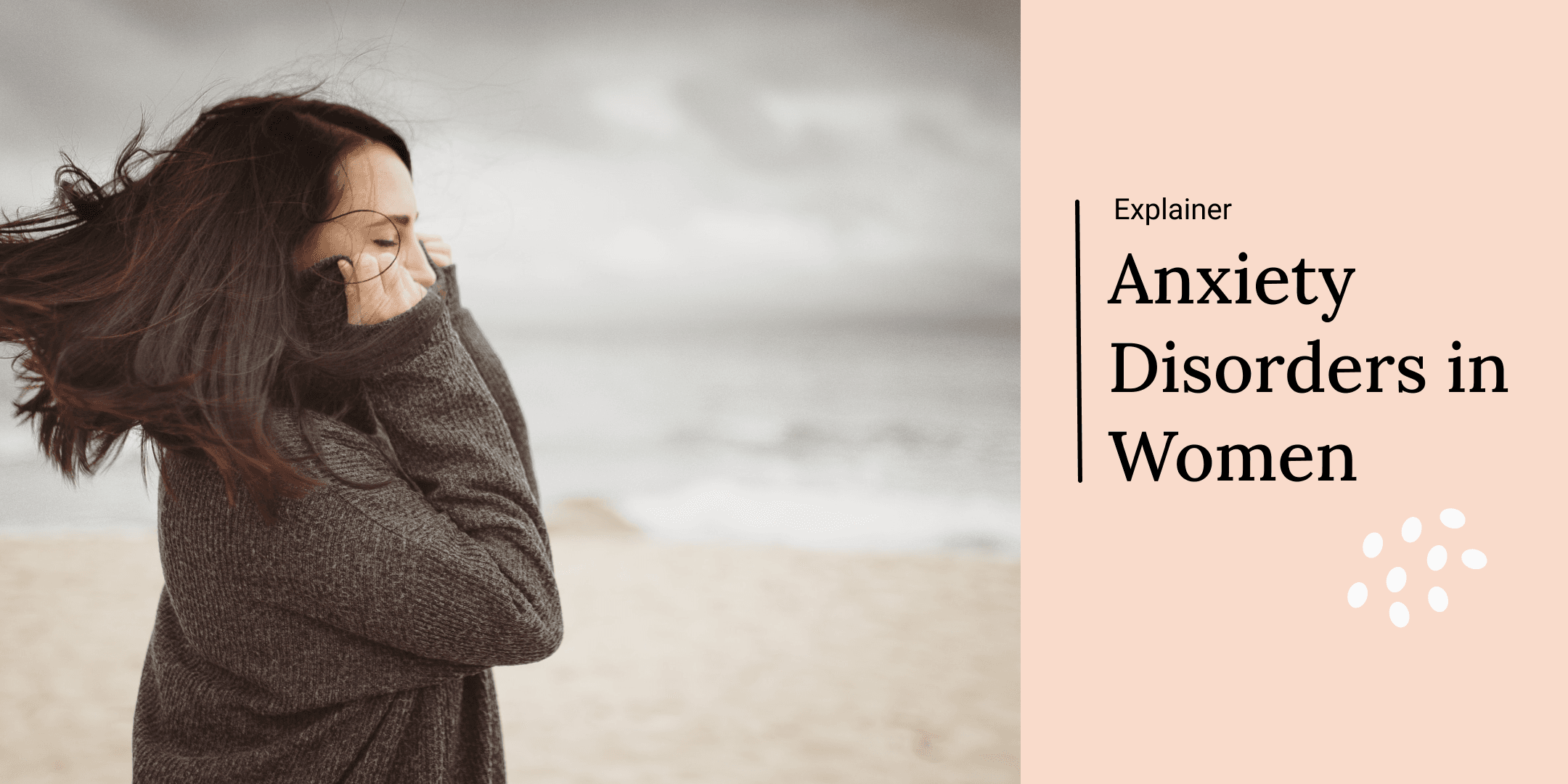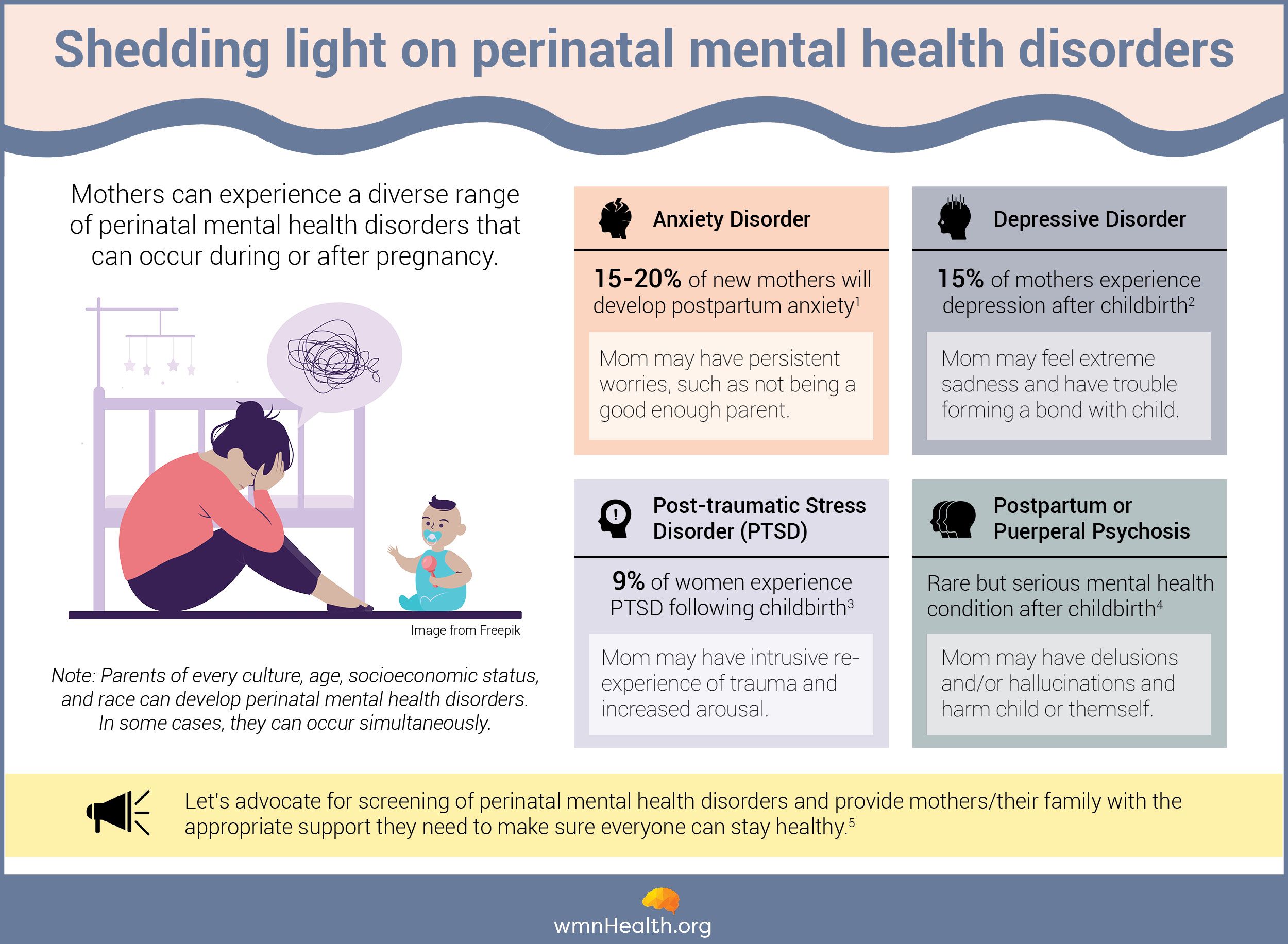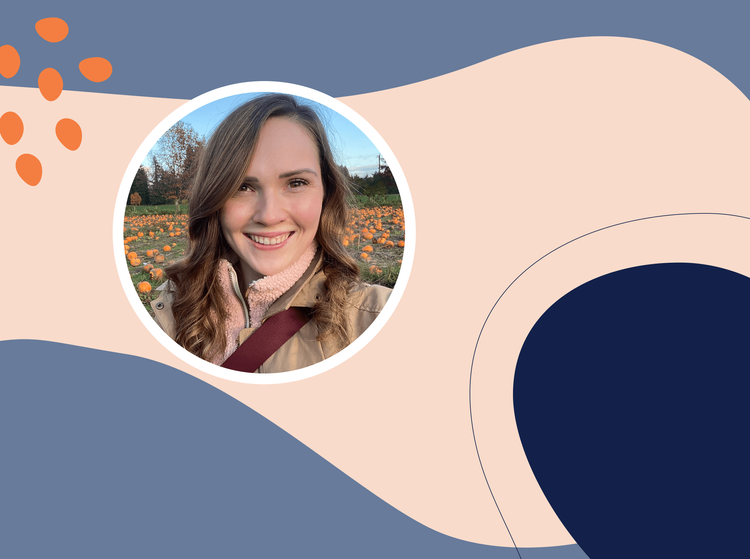
May 02, 2023, 4:00 am UTC
9 min
Created by
Understanding anxiety disorders in women: Causes, symptoms, and treatment options
Listen to a summary this article
Women are disproportionately affected by anxiety disorders. Much more research is needed to understand why — and what can be done to help.
In this article, we'll cover:
- What is anxiety?
- What are anxiety disorders?
- What are the most common anxiety disorders in women?
- What is the prevalence of anxiety disorders—and how do males and females compare?
- What are the signs and symptoms of anxiety disorders?
- What are the causes and risk factors of anxiety disorders in women?
- What are the most effective treatments for anxiety disorders?
This is a living article. The wmnHealth team will update it as new information becomes available. (Updated November 2023)
What is anxiety?
All of us occasionally experience anxiety — feelings of worry, nervousness, or unease — especially in potentially dangerous or stressful situations like getting stuck in an elevator, taking an exam, or performing at work. Anxiety is usually accompanied by telltale physical changes like sweating, a rapid heartbeat, and accelerated breathing.
Anxiety is an adaptive response that evolved to keep us out of harm’s way. It provides that boost of energy to “fight or flee” from a perceived threat or help us focus when our lives depend on it.
However, in people with anxiety disorders, those feelings of worry or fear persist and can become overwhelming.
anxiety
n. an emotion characterized by apprehension and somatic symptoms of tension in which an individual anticipates impending danger, catastrophe, or misfortune. The body often mobilizes itself to meet the perceived threat: Muscles become tense, breathing is faster, and the heart beats more rapidly.
Anxiety may be distinguished from fear. Anxiety is considered a future-oriented, long-acting response broadly focused on a diffuse threat, whereas fear is an appropriate, present-oriented, and short-lived response to a clearly identifiable and specific threat.
Source: Adapted from the American Psychological Association
What are anxiety disorders?
Unlike occasional anxiety, anxiety disorders are mental health conditions in which anxiety is constant, excessive, or worsens over time. Anxiety disorders interfere with daily life, including a person’s relationships with others and their activities at home, work, or school.
Common Anxiety Disorders in Women
Anxiety disorders are very common in both women and men. However, women face unique experiences that may put them at risk for certain types of anxiety or tend to worsen anxiety. Furthermore, hormonal changes in women during puberty, pregnancy, and menopause can trigger anxiety during those major life stages.
Here are some of the most common anxiety disorders affecting women:
- Generalized anxiety disorder (GAD)
- Panic disorder
- Phobias
- Social anxiety disorder (SAD)
- Perinatal anxiety
- Postpartum anxiety
Generalized anxiety disorder (GAD) is characterized by uncontrollable worry or fear about ordinary issues like health, money, work, and family that persists for months or even years. People with GAD have feelings of dread or distress over potential negative outcomes. These feelings may be triggered by a specific event or activity or may occur for no clear reason. They also tend to be out of proportion to the situation.
Panic disorder is a condition in which people experience sudden panic symptoms, along with persistent worry or fear of those symptoms, even when there is no danger. Panic symptoms include a pounding heart, shortness of breath, chest pain or discomfort, nausea or upset stomach, chills or heat sensations. These unpleasant symptoms of panic attacks can last anywhere from a few minutes to an hour.
Phobias are characterized by excessive fear of a specific object or situation that poses little to no danger. They are triggered by the presence or anticipation of a given object or situation. Common specific phobias are flying, heights, spiders, and blood.
Social anxiety disorder (SAD), also known as social phobia, is an excessive fear of social or performance situations in which a person may experience embarrassment or humiliation. Unlike the occasional anxiety people feel during everyday social interactions, SAD is characterized by intense distress, self-consciousness, and fear of judgment.
Prenatal Anxiety: Some women experience anxiety during pregnancy due to the stress of preparing for motherhood and childbirth.
Postpartum Anxiety: Some postpartum women experience anxiety after giving birth, either with or without depression.
 Infographic by Cat Lau. (References below.)
Infographic by Cat Lau. (References below.)What are the most common signs and symptoms of anxiety disorders?
The signs and symptoms of anxiety vary from person to person and range from physical symptoms to thought patterns to behaviors.
Some of the most common symptoms, according to the Anxiety and Depression Association of America, are:
- Feelings of nervousness, irritability, or being “on edge”
- Feelings of panic or sensing impending danger or doom
- Increased heart rate, hyperventilation, sweating, or shaking
- Feelings of weakness or exhaustion
- Difficulty concentrating or sleeping
- Gastrointestinal disturbances
How common are anxiety disorders?
Along with depression, anxiety disorders are the most common mental condition in the world, affecting 3.8% of the global population.
Considering only adults in the United States, anxiety prevalence rises to 19.1% of the population over 18 or approximately 40 million people.
Specific phobias are the most common anxiety disorder (9.1%), followed closely by social anxiety disorder (7.1%). GAD affects 3.1% of American adults and panic disorder affects 2.7%.
Are anxiety disorders more common in women than men?
The short answer is yes. Overall, women are about twice as likely as men to experience anxiety during their lifetime.
For example, globally, 4.7% of females and 2.8% of males have anxiety. In the United States, one study led by clinical psychologist Carmen McLean found women are more likely to be diagnosed with nearly all anxiety disorders over their lifetime than men.
Numerous other studies have found sex or gender differences in the way men and women experience or react to anxiety (see key differences below). However, health researchers don’t completely understand why anxiety rates and responses are different.
Here are some of the key gender differences:
General Anxiety Disorder (GAD):
- The lifetime prevalence of GAD is 6% of women compared to 3% of men.
- GAD has an estimated prevalence of 8.5% to 10.5% during pregnancy and 4.4% to 10.8% during the postpartum period.
- Women are more likely to experience physical symptoms of anxiety such as fatigue, muscle stiffness, or gastrointestinal disturbances.
Panic disorder:
- At least twice as many women compared to men have panic disorder.
- Compared to men, women are more likely to experience fear along with physical symptoms of panic.
Specific phobias:
- About twice as many women compared to men have specific phobias.
- Women tend to fear animals and environmental factors like heights, water, and storms.
Social anxiety disorder (SAD):
- The lifetime prevalence of SAD is similar for women and men.
- Women’s social anxieties tend to focus on performance situations in which they fear being scrutinized by others.
What are the causes and risk factors for anxiety in women?
Researchers think a combination of biological and environmental factors cause anxiety in women, though much more research is needed. Compared to depression, anxiety disorders in women are understudied.
The biological factors causing anxiety include genetics and hormones. Estrogen and progesterone levels fluctuate during puberty, menstruation, pregnancy, the postpartum period, and menopause, and contribute to anxiety during these periods of a woman's life. Genetics also plays a role: Women and men who have a family history of anxiety are more likely to develop it during their lifetime.
The environmental factors that cause anxiety include stress and trauma. People who have experienced traumatic events, including sexual, physical, and emotional abuse, are more likely to develop anxiety. Social pressures, gender stereotypes, and sexism — all of which increase stress in women — may also play a role in anxiety disorders.
For women, the risk factors and protective factors influencing the likelihood that an individual will develop anxiety include:
- family history
- poor support system
- history of trauma
- polycystic ovarian syndrome
- negative coping or cognitive styles like rumination and worry
In contrast, protective factors include:
- an active coping style
- a good support system
What are the most effective treatments for anxiety disorders?
The most effective treatment for anxiety disorders in women can vary depending on the specific type and severity of the anxiety disorder. Treatment plans should be personalized, and may consistent of a combination of approaches. Here are some common and effective treatments for anxiety disorders in women:
-
Psychotherapy:
- Cognitive Behavioral Therapy (CBT): CBT is a widely used and effective form of psychotherapy for anxiety disorders. It helps individuals identify and change negative thought patterns and behaviors that contribute to anxiety.
- Exposure therapy: This involves gradually facing and overcoming fears through controlled exposure to anxiety-provoking situations.
-
Medications:
- Antidepressants: Selective serotonin reuptake inhibitors (SSRIs) and serotonin-norepinephrine reuptake inhibitors (SNRIs) are often prescribed for anxiety disorders. They can help regulate neurotransmitters associated with mood and anxiety.
- Anti-anxiety medications (Benzodiazepines): These are sometimes prescribed for short-term relief of severe anxiety symptoms, but they come with the risk of dependence and should be used with caution.
- Beta-blockers: These are sometimes used to treat physical symptoms associated with anxiety, which can actually alleviate feelings of anxiety. They work by relaxing blood vessels and slowing heart rate.
-
Lifestyle Changes:
- Regular exercise: Physical activity has been shown to reduce anxiety and improve mood by releasing endorphins, the body's natural stress relievers.
- Healthy diet: Nutrient-rich foods and a balanced diet can positively impact mood and overall well-being.
- Adequate sleep: Lack of sleep can exacerbate anxiety symptoms, so ensuring good sleep hygiene is crucial.
-
Mind-Body Techniques:
- Mindfulness meditation: Mindfulness-based interventions, such as mindfulness-based stress reduction (MBSR), can be effective in managing anxiety.
- Yoga: Combining physical postures, breathing exercises, and meditation, yoga can help reduce stress and promote relaxation.
Infographic references:



